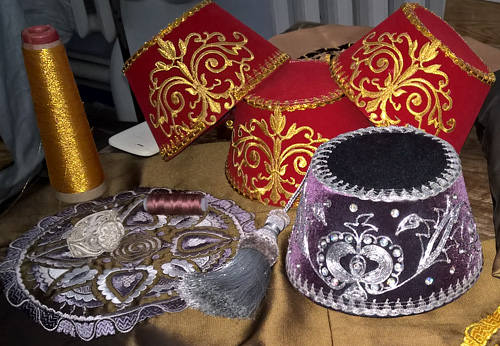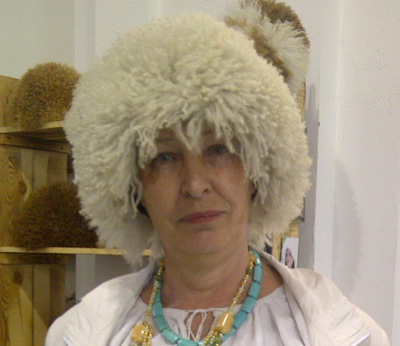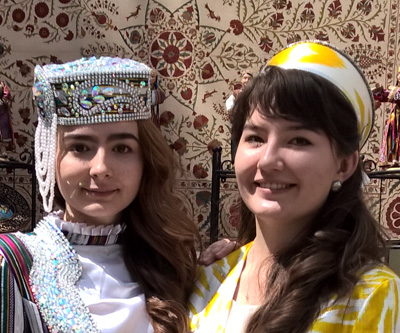 Clothing traditions are often common for the neighboring countries. This rule almost always works for accessories. That's why conical hats are typical for many Asian countries, fez for the Middle East, cowboy hats for North and South Americas, high fur hats (called "papaha") for Caucasus, turbans for Arabian countries, the Near East and India, and berets for Europe.
Clothing traditions are often common for the neighboring countries. This rule almost always works for accessories. That's why conical hats are typical for many Asian countries, fez for the Middle East, cowboy hats for North and South Americas, high fur hats (called "papaha") for Caucasus, turbans for Arabian countries, the Near East and India, and berets for Europe.
The national headgear can tell a lot about the country, its neighboring countries, its traditions, religion and even nature. Every piece of the traditional costume of any country has come a long way of evolution to become just as it is today. The shape, material, method of manufacturing, number, and type of decorative elements of the traditional hat can tell you a bit about the culture of the specific nation. So, let's take a closer look at some hats typical for certain countries and the whole regions.
Beret
It is a hat usual for France, Scotland and Spain. Beret is a round hat with a soft flat crown. It is usually made from cotton, wool, felt or acrylic fiber. In France, Scotland and Spain, beret is a part of the national costume, but it is also used in military forces of many countries as a part of the uniform. A beret should fit the head perfectly, but there are plenty of ways of shaping it (the most common is to push the beret to one side). In France beret is no longer as popular as it used to be years ago. But it still shows the national identity, especially in the southwest part of the country. In Spain beret is also used rather seldom today, but in the 17th century it used to be widespread. In Scotland, beret is a symbol of patriotism. Ribbon cockades and feathers used to show clan and rank identification. Actually, there are several types of the beret is this country: Scottish bonnet or Bluebonnet, tam-o'-shanter and Kilmarnock cap. The last two berets have a large pompom at the center. A beret in Scotland was often sewn from fabric with the Scottish print "tartan" and matched the kilt.
Calpack, Calpac, Kalpac, Kalpak, or Qalpaq
This hat is popular in Turkey, Kyrgyzstan, Russia, Tajikistan, Uzbekistan and other countries. It is a high hat without or with small brims. There are several different types of kalpak, but mostly they are divided into winter kalpak and summer kalpak. Winter one is made from sheepskin or felt, summer kalpak is made from felt. This hat is rather convenient: it warms you in winter and protects from the hot sun in summer. Kalpak is an obligatory part of Kirghiz national costume. They wear white kalpak with dark embroidery, sometimes it has a tassel. In Kyrgyzstan both men and women use kalpak. In Turkey today people use kalpak very seldom, but in Ottoman Empire, it used to be one of the most popular hats.

Traditional male (at the right) and female (at the left) Kalpak of Kazakhstan
Conical hat
This kind of hat is popular in China, Japan, Korea, Vietnam, Cambodia, India, Indonesia, Bangladesh, and the Philippines. Conical hat is made from bamboo, wheat or rice straw, and matting. It has a chin strap to fix the hat on the head. So, even if you lean it doesn't fall down. That's why this kind of hat is popular among farmers, soldiers and street sellers. This hat is very convenient fo the hot and wet climate. It protects the head and face from the sun, it isn't heated in direct sunlight, it allows rain-drops to flow down from the head, and, of course, it is natural (which is always good). Conical hat is used both by men and women, and also by children.

Cowboy hat
This kind of hat is worn in US, Canada, Mexico, Chile, Argentine etc. It is a high-crowned and wide-brimmed hat. This headgear is called "cowboy hat" because cowboys wore it, they use it till today. The thing is, cowboy hat protects the head from the hot sun and rain. It is convenient and looks pretty cool. There are many designs of a cowboy hat, but the idea is the same. Usually, a cowboy hat is white/beige, brown or black. It is made from felt, straw or leather. The brim is wide and flat. Cowboy hat often has a small decorative hat band on the outside of the crown. The cowboy hat is a great part of American history (both North and South Americas).
Fez
Fez is worn in Turkey, Cyprus, Egypt, Tunisia, Morocco and other countries. In Arabic world, it is called "tarboosh". There are 2 types of a fez: a truncated cone made of red felt or a short cylinder made of kilim fabric. Usually, it has a tassel attached to the top. Fez is often used by men in Muslim countries, but nowadays it is loosing its popularity. There is even a thought that fez is considered by some Muslims to be politically incorrect. But still, fez is a national headdress in such countries as Turkey, Morocco etc.

Traditional women's fez, part of national costume of Crimean Tatars
Karakul hat
This kind of hat is used in Afghanistan, Pakistan, Russia, Ukraine, Georgia, Azerbaijan and others. It is a warm hat made from sheepskin. In Caucasus, it is called "papakha". Caucasian karakul hat is often rather high (men's papakha) and round. Women's one is low and also round. In Afghanistan and Pakistan karakul hat is small and peaked, it folds flat when taken off the head. It is a little bit similar to taqiyah hat but warmer. In Ukraine, karakul hat was used by Cossacks in winter. Nowadays it is rare and uncommon. In Russia karakul hat was popular in times of USSR, today it is uncommon as well.

Georgian women's papakha / karakul hat
Sombrero
It is a hat popular in Mexico, Spain, US, Columbia. This hat has very wide brims, the crown can be low or high. Sombrero protects the head from sun and rain, creates a shadow for the face and shoulders. Sometimes it has a chin string not to fall when a person leans. Sombrero is usually made from straw or felt and embellished with different decorations (ribbons, embroidery, beads and so on). There are many color variations of a sombrero, but the most popular are yellow (natural color of straw) and black with silver and colorful embellishment.

Traditional Mexican sombrero
Taqiyah
It is a short, rounded skullcap used in Afghanistan, China, Indonesia, Maldives, Malaysia, Pakistan, Russia, Somalia, Sudan, Turkey, United Arab Emirates, Kazakhstan, Tajikistan, Turkmenistan etc. Taqiyah is made from different kinds of fabric and embellished with colorful patterns. It can be of any color and shape (round and square, flat-topped and peaked). It is often used for religious purposes. But in several countries, taqiyah is considered to be the traditional headgear. For example, in Indonesia (called "peci" or "songkok"), Malaysia (called "songkok"), Kazakhstan (called "tubeteika"), Tajikistan (called "tubeteika"), and Turkmenistan (called "tahya"). Taqiyah is a headdress for men, women, and children. Mostly men's taqiyahs are white with pale patterns, and women's hats can be bright and colorful.

Traditional Sudanese men's taqiyah

Two different women's tubeteikas, national clothing of Uzbekistan
Turban
This hat is worn in India, Afghanistan, Pakistan, the Arabian Peninsula, the Near East, Southeast Asia, the Sahel, North Africa and the Horn of Africa, and parts of the Swahili Coast. Turban is a traditional headdress for the Muslim world, that's why it is a very popular headgear in the world. By design it is a cloth winding hat; it consists of a long (up to 5 meters) piece of cloth. Sometimes the turban is permanently formed and sewn, but usually it is winded anew every time. There can be any shape, color, and size of the turban. This headgear is typical for men and boys, though women also wear it but seldom.

Traditional turban, part of national costume of Sudan
Ushanka
It is a typical Russian hat. Usually, it is made from fur (rabbit, sheep or muskrat), but cloth, leather, and other materials can also be used. Sometimes ushanka is knitted by hands or knitting machine. This hat has long ear flaps, in most cases, it fastens at the chin, but often the ear flaps are tied on top of the hat. Ear flaps help to protect ears, jaw and cheeks from cold weather which is usual for Russia. Usually, ushanka doesn't have any embellishment, but it can be of any color: the color of natural fur, painted fur or many different variations.


